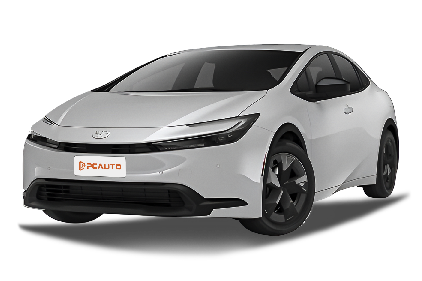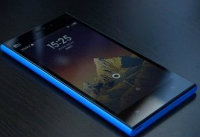Q
What is the fuel consumption per gallon for Toyota Prius?
As a classic hybrid model, the Toyota Prius excels in fuel economy. According to official data, the latest generation of Prius has a fuel consumption of approximately 3.7 to 4.0 liters per 100 kilometers (equivalent to approximately 56 to 60 miles per gallon, mpg) under comprehensive road conditions. The specific value may vary depending on driving habits, road conditions, and vehicle configuration. In Malaysia, due to heavy urban traffic, Prius's hybrid system can effectively reduce fuel consumption at idle, making it very suitable for daily commuting. In addition, the Atkinson cycle engine and electric motor used in Prius work together, which not only improves fuel efficiency but also reduces exhaust emissions, in line with environmental trends. If you are interested in energy-efficient vehicles, you can also learn about other hybrid or plug-in hybrid models, which have their own advantages in different driving scenarios, but Prius has always been the first choice for many consumers due to its reliability and mature technology.
Q
How does the 2023 Toyota Prius compare to the Tesla Model 3?
The 2023 Toyota Prius and Tesla Model 3 are two models with different positioning. The Prius, as a representative of hybrid vehicles, focuses on fuel economy and practicality, while the Model 3 is a pure electric model, known for its sense of technology and performance. The Prius is equipped with a 1.8L or 2.0L hybrid system, which has excellent overall fuel consumption performance and is suitable for Malaysian consumers' demand for low fuel consumption. At the same time, its interior design is more traditional and the operation is intuitive. The Model 3 provides instant torque and a quiet driving experience with pure electric drive, and its range is outstanding in the standard and long range versions, making it suitable for areas with more complete charging facilities. Both cars have rich safety features, with the Prius equipped with Toyota TSS 3.0 system and the Model 3 featuring Tesla's Autopilot assisted driving function. For Malaysian users, choosing Prius may be more suitable for the environment dominated by local fuel vehicles, while Model 3 is suitable for consumers who are willing to try new energy and have household charging conditions. In addition, the maintenance cost of Prius is relatively low, while the long-term usage cost of Model 3 may be more attractive due to its electricity advantage, and the specific choice depends on personal driving habits and budget.
Q
What is the price of a Toyota Prius hybrid battery
In Malaysia, the replacement cost of Toyota Prius hybrid batteries typically ranges from RM8000 to RM15000, depending on the battery model, year, and whether the original factory or third-party supplier is chosen. Original factory batteries have a higher price but enjoy warranty services, while third-party options may be more economical but require careful evaluation of quality and after-sales service. The hybrid battery life of Prius is generally 8 to 10 years or about 200000 kilometers, but the actual life is affected by driving habits, climate, and maintenance. Regular maintenance, such as avoiding overcharging and discharging, can extend battery performance. In addition, the Malaysian government encourages environmentally friendly vehicles, and some states may offer tax incentives for hybrid vehicles. Car owners can also consult certified repair centers for battery recycling or refurbishment plans to reduce long-term usage costs.
Q
How to Test Toyota Prius Hybrid Battery
To test the health status of the Toyota Prius hybrid battery, several methods can be used for preliminary inspection. Firstly, the OBD-II diagnostic tool is used to read the voltage data of the battery module, ensuring that the voltage of each module is balanced (usually around 7.2V). If the voltage difference of individual modules exceeds 0.5V, it may indicate aging problems. Secondly, observe the hybrid system warning light on the dashboard or check the battery charging and discharging efficiency on the on-board energy monitoring screen. Abnormal fluctuations may indicate a decrease in battery performance. In addition, when the vehicle is started, turn on the air conditioning and switch to pure electric mode to test whether the battery can continue to drive the vehicle for 5-10 minutes (depending on the battery capacity). If it frequently switches to the engine, further testing is needed. For Malaysian users, the humid and hot climate may accelerate the evaporation of battery electrolyte or corrosion of terminals. It is recommended to regularly check whether the battery cooling fan is blocked and avoid long-term parking that may cause deep discharge of the battery. If a more accurate assessment is needed, you can contact a Toyota authorized service center for battery capacity testing or internal resistance analysis. The lifespan of hybrid batteries is usually 8-10 years or 150000 to 200000 kilometers, but the actual lifespan is greatly affected by driving habits and maintenance. Reasonable use can extend their effectiveness.
Q
How much does a Toyota Prius hybrid car cost
At present, in Malaysia, the price of Toyota Prius Hybrid varies depending on the model year, configuration, and condition. The new car price is approximately between RM 139000 and RM 155000, depending on the options and promotional activities, while the price in the second-hand market starts from RM 70000, depending on the age and mileage of the vehicle. As a classic hybrid model of Toyota, the Prius Hybrid is favored by many Malaysian consumers for its excellent fuel economy and environmental performance, especially suitable for urban commuting. Its hybrid technology can effectively reduce fuel consumption and carbon emissions. The Malaysian government provides certain tax incentives for hybrid vehicles, which makes the holding cost of Prius Hybrid more attractive. In addition, Toyota has a wide after-sales service network in Malaysia, making repairs and maintenance relatively convenient, further enhancing the practicality of this car. If you are considering purchasing a hybrid car, the Prius Hybrid is a noteworthy choice. It is recommended to test drive it at a nearby Toyota dealership and learn about the latest promotional plans.
Q
What is the towing capacity of Toyota Prius?
As a hybrid model known for its fuel economy and environmental friendliness, the traction capacity of the Toyota Prius is not the main design focus. According to official data, the traction capacity of the Prius is about 454 kilograms, suitable for towing small trailers or light items. However, it should be noted that Malaysia's traffic regulations have clear restrictions on vehicle traction, such as requiring trailers to be registered and equipped with brake systems, and the total weight must not exceed the upper limit specified by the vehicle manufacturer. When using Prius for towing in Malaysia, it is recommended to first consult the vehicle manual to confirm specific parameters and ensure that the trailer load is evenly distributed to avoid affecting driving stability. In addition, although the battery and motor systems of hybrid vehicles perform well in urban driving, they may affect fuel efficiency under long-term high load traction conditions, so it is not recommended to frequently use them for heavy-duty traction tasks. If you often need to tow heavy items, you can consider choosing other Toyota models that are more suitable for towing, such as Hilux or Fortuner, which have stronger power and higher towing capabilities. Regardless of which car is chosen, regular checks on the vehicle's condition and compliance with local regulations are important prerequisites for safe driving.
Q
How to reset the Toyota Prius hybrid system
To reset the Toyota Prius hybrid system, you can first disconnect 12V The negative cable of the battery should be fully discharged for about 5 minutes before reconnecting, which can clear temporary fault codes and reset the hybrid control unit. However, please note that this operation will reset the memory of electronic devices such as the radio. It is recommended to record important settings before cutting off the power. For Malaysian car owners, the hot and humid climate may cause the battery to age faster, so it is important to regularly check the battery status. If the problem still exists, it is recommended to go to an authorized repair center to use professional diagnostic tools, because some deep faults require specialized equipment to be completely cleared. The maintenance of hybrid systems is different from traditional cars, and it is recommended to check according to the manufacturer's prescribed maintenance cycle, especially the maintenance of the cooling system and high-voltage battery pack, which are crucial for maintaining efficient system operation, Pay attention to the hybrid system indicator light on the dashboard while driving, and check any abnormalities as soon as possible to ensure that the vehicle is always in optimal condition.
Q
What is the fuel consumption of Toyota Prius
As a representative of hybrid models, the Toyota Prius performs excellently in terms of fuel economy. Depending on the model year and driving conditions, its comprehensive fuel consumption is approximately 3.8 to 4.5 liters per 100 kilometers, which is equivalent to driving 22 to 26 kilometers per liter of gasoline. This performance is very suitable for the frequent start stop road conditions in Malaysian cities and can significantly reduce vehicle costs. The Prius adopts Toyota's mature hybrid system, which works in conjunction with a gasoline engine through an electric motor. It prioritizes electric drive at low speeds and automatically switches to the gasoline engine at high speeds, improving fuel efficiency and reducing emissions. For Malaysian consumers, in addition to its fuel efficiency advantage, Prius's battery pack has also undergone durability testing in tropical climates, ensuring reliability. At the same time, hybrid vehicles can be quieter and more comfortable on congested roads in Kuala Lumpur. If considering long-term use, the maintenance cost of Prius is similar to that of traditional gasoline cars, but the fuel cost savings are significant, especially suitable for drivers who value environmental protection and economy.
Q
How much is the Toyota Prius
In Malaysia, the price of Toyota Prius varies depending on the model year, configuration, and condition. The official selling price of the new Prius starts at approximately RM 139000, and the specific price may change due to promotional activities or optional items. It is recommended to directly consult the local Toyota dealer for the latest quotation. As a pioneer in hybrid technology, Prius is favored by many consumers for its excellent fuel economy and environmental performance, especially for Malaysian drivers who focus on energy conservation and carbon reduction. In addition to its fuel-efficient features, the Prius is also equipped with Toyota's latest safety technology such as Toyota Safety Sense, providing functions including pre collision systems and lane keeping assistance. In the Malaysian market, hybrid vehicles enjoy tax incentives provided by the government, which makes the Prius more competitive in terms of long-term operating costs. If you are considering purchasing a used car, the price usually ranges from RM 60000 to RM 100000, depending on the age and mileage of the car. It is recommended to pass the Toyota Certified Used Car Program before purchasing to ensure the condition of the car.
Q
How many miles can a Toyota Prius travel
As a classic hybrid model, the Toyota Prius is widely recognized in the Malaysian market for its durability and fuel economy. Generally speaking, with regular maintenance and good driving habits, the mileage of the Prius can reach 250000 to 300000 kilometers or even more. This is mainly due to its efficient hybrid system and reliable powertrain design, especially the battery pack, which can maintain a lifespan of more than 10 years or longer under normal use. However, the specific mileage may also be affected by local climate, road conditions, and maintenance frequency. For Malaysian users, the hot and humid climate may have a certain impact on battery life, so it is recommended to regularly check the cooling system and battery condition, while following the manufacturer's recommended maintenance cycle, such as conducting a basic inspection every 10000 kilometers or 6 months, which can significantly extend the vehicle's life. It is worth mentioning that the resale value of Prius used cars is relatively high in Malaysia, and many vehicles with a mileage of over 150000 kilometers can still maintain good performance, which further proves its reliability. If considering purchasing a second-hand Prius, it is recommended to confirm the battery health and vehicle maintenance records through professional testing.


















